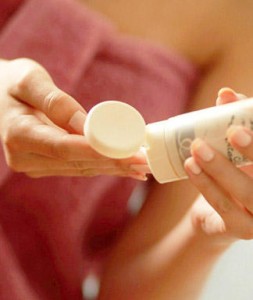 You belly’s growing, which means your skin is stretching and often becomes dry and sensitive. There’s not much you can do about preventing stretch marks, but you can relieve your itchy belly with these 6 easy steps, from Parents.com.
You belly’s growing, which means your skin is stretching and often becomes dry and sensitive. There’s not much you can do about preventing stretch marks, but you can relieve your itchy belly with these 6 easy steps, from Parents.com.
Moisturize: Rub on a thick, rich moisturizer (like cocoa butter) each night before bed. It’ll soak in overnight, leaving your skin soft and less itchy.
Soft Fabrics: Wear super-soft natural fabrics, like cotton, cashmere and silk, instead of scratchy wools or heavy denims, which can make the itching worse.
Down Under: Go for undies, pants and skirts that rest under your belly. Anything that’s too tight around your belly can cause too much rubbing and irritation.
Stay Hydrated: Drink plenty of water, which will keep all of you hydrated — skin included.
Soak Smart: Avoid soaking in a hot tub; it’ll zap your skin’s moisture. However, taking a warm bath with a soothing oatmeal mix (like Aveeno) can help.
Humidify: Spending a lot of time in a central-heated or air-conditioned space can dry out your skin. Consider buying a humidifier to send some moisture back into the air, which’ll help your belly stay hydrated too.
Pregnancy Rashes:
PUPPP: Some pregnant women develop a condition characterized by itchy, red bumps and larger patches of a hive-like rash on their bellies. This is called pruritic urticarial papules and plaques of pregnancy (PUPPP) or polymorphic eruption of pregnancy. The eruptions usually show up first on the abdomen around or in stretch marks, and may spread to your thighs, buttocks, and arms. PUPPP is harmless for you and your baby, but it can itch like crazy! It is treated with topical ointment, antihistamine, or, in severe cases, oral steroids. Visit Baby Center for more info.
Prurigo of pregnancy: This skin condition is more rare than PUPPP, and is characterized by many tiny bumps that may look like bug bites. These eruptions can occur anywhere on your body, but you’re most likely to get them on your hands, feet, arms, and legs. Although the eruptions can be itchy and annoying, prurigo of pregnancy appears to pose no risk to your baby. This condition generally starts around the beginning of the third trimester and may last for up to three months after you give birth.
Pemphigoid gestationis (or herpes gestationis, although it has nothing to do with herpes virus). In very rare cases, a pregnant woman will develop very itchy eruptions that start out like hives and then turn into large blistering lesions. It often start on the abdomen and spread to the arms and legs. This condition is considered more serious because it may be associated with an increased risk for preterm delivery and fetal growth problems. Pemphigoid gestationis can come and go throughout pregnancy, and it often flares up after delivery as well. It usually happens again in subsequent pregnancies and tends to be more severe.
Intrahepatic cholestasis of pregnancy is a liver problem charictarized by severe itchiness in the 2nd or 3rd trimester. When bile doesn’t flow normally in the small ducts of your liver, bile salts accumulate in your skin and make you itch all over. The itching can be quite intense. The condition itself doesn’t cause a rash, but uncotrollable scratching my turn your skin red and irritated. Call your doctor or midwife immediately if you think you have cholestasis because it may spell trouble for your baby. Depending on your health and your baby’s condition, you may be induced before your due date. Visit Baby Center for more info.
If you develop any kind of rash during pregnancy, it’s a good idea to have your caregiver evaluate it and recommend appropriate treatment, or refer you to a dermatologist.
Image from Woman’s Day




